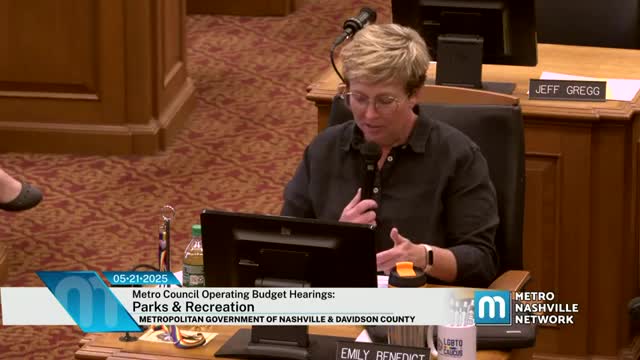Nashville Council discusses staffing equity at Shelby Golf Course and benefits for underserved areas
May 23, 2025 | Budget & Finance Meetings, Nashville, Davidson County, Tennessee
Thanks to Scribe from Workplace AI , all articles about Tennessee are free for you to enjoy throughout 2025!

This article was created by AI using a video recording of the meeting. It summarizes the key points discussed, but for full details and context, please refer to the video of the full meeting. Link to Full Meeting
Benedikt emphasized the need for equitable service levels, particularly for communities with limited access to recreational facilities. The conversation revealed that Shelby Golf Course had previously operated with fewer staff—four full-time employees compared to the typical seven for an 18-hole course—despite a recent renovation that increased its usage. This disparity raised questions about how city resources are allocated and whether they adequately support underserved communities.
Wayne Evans, who oversees Nashville's golf courses, noted that Shelby's user numbers have significantly increased since its renovation, prompting requests for additional staffing to maintain service quality. However, he acknowledged the lack of demographic data on users at the courses, which complicates efforts to assess equity in resource distribution.
The discussions also touched on the onboarding timeline for seasonal staff across various facilities, with recruitment for golf positions starting as early as March. The city is adjusting hourly pay rates for these positions, aiming to attract more applicants as summer programs approach.
Overall, the meeting underscored the ongoing challenges of ensuring equitable access to recreational facilities in Nashville. As the council continues to deliberate on budget allocations, the need for a strategic approach to resource distribution remains a critical concern for community leaders and residents alike. The outcome of these discussions will likely influence future funding decisions and the overall accessibility of parks and recreational services in the city.
Converted from 05/21/25 Metro Council Operating Budget Hearings: Parks & Recreation meeting on May 23, 2025
Link to Full Meeting
Comments
View full meeting
This article is based on a recent meeting—watch the full video and explore the complete transcript for deeper insights into the discussion.
View full meeting